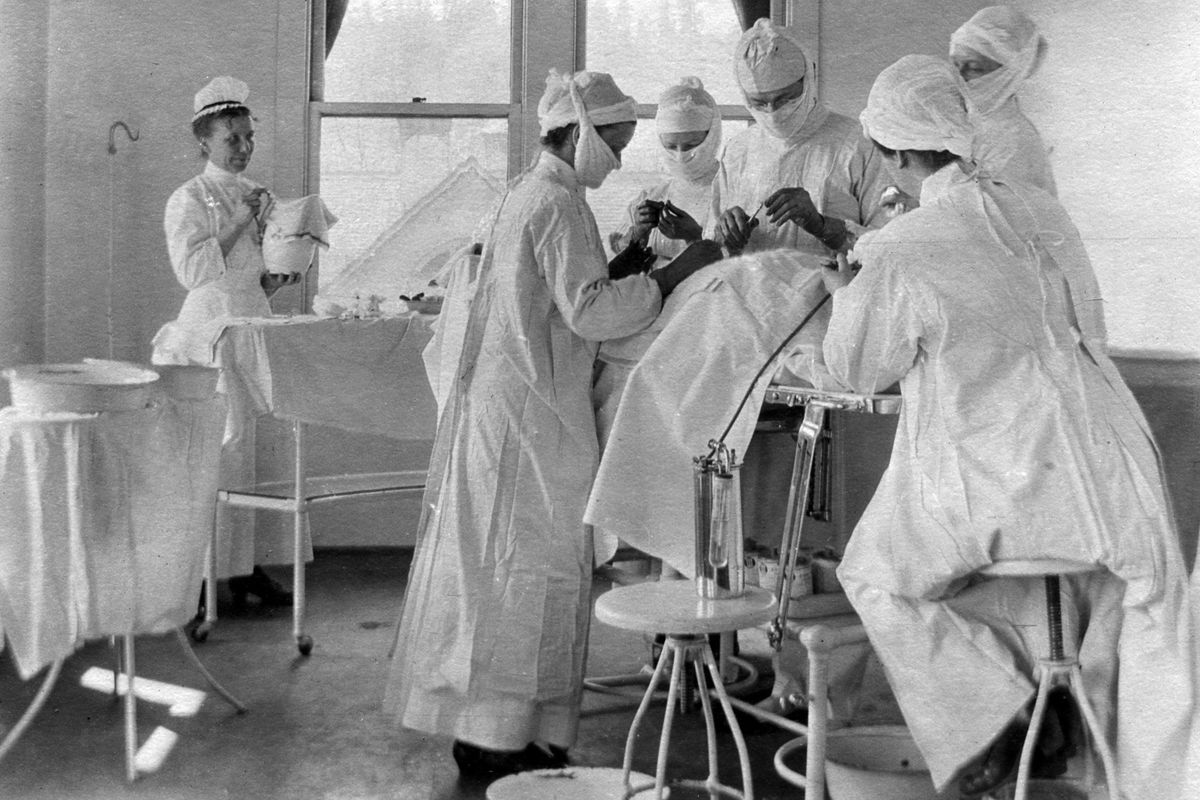King Collection: Nurse photo triggers wave of responses

You run her photo in the newspaper and ask if anyone recognizes the woman, an intelligent-looking nurse from Spokane. The photo, found in the King Collection archives of The Spokesman-Review, has no name, no date.
And the day the photo appears, the phone calls begin. Her name is Alice Hope, the callers say. These callers are nurses, mostly now retired, proud graduates of Deaconess Hospital’s nursing school. They looked in their school’s history book, which contains photos of all the classes, and they discovered the mystery woman.
Alice Hope, class of 1926.
And so you look in the newspaper’s clip files, hoping to find something on this Alice Hope. Nothing. Perhaps she married soon after graduating from nursing school. Or moved out of town. It was easier for people to disappear in the days before the Internet, especially women, disappearing into their husband’s names and lives.
But you are fortunate, because these wonderful alumni of Deaconess Hospital’s nursing school have kept the history alive. You can find it easily. Take the elevator to the fourth floor of Deaconess Hospital and then follow the signs to the Deaconess Surgery Center. In the long corridor there, near the surgery waiting area, you find the Nursing Alumni Historical Wall.
The display features photos of all the classes, and other photos from the early years, and well-written bits of the school’s history. The display is museum-worthy, an act of love and remembrance for the pioneer nurses in our community. And through it, you can imagine some of Hope’s life in 1926.
First, you visit her class photo. In 1926, many of Hope’s 23 classmates bear names that have disappeared from the popular baby-names list. Hello Pearl, Esther, Winifred, Gladys, Mabel, Edna, Bernice, Florence.
Many of the women sported “Harry Potter” glasses and the bobbed-finger-wave hairstyle, controversial at the school just two years prior when several women were “disciplined for bobbing their hair.”
That same year, a student nurse was dismissed for smoking a cigarette, and the administration made it clear that “we do not approve of students going to dances as we try to uphold as high a moral standard for the hospital as possible.”
The school still likely held sorrow for the five nurses killed less than a decade before, in the 1917 flu epidemic that swept the world.
Hope entered the profession in an exciting time of modernization. A 1922 photo of a surgical suite asks the viewer to “note the jar of leeches near the rear door.” By Hope’s class, blood-sucking creatures were out of surgical favor.
Hope’s class members wore the latest style in nursing caps. Gone were the starched linen high hats, a style that now looks Dr. Seuss-ish. Also in 1926: “Uniform skirts were raised to 10 inches off the floor … sleeves were shortened to above the elbow. Nurses wore black hose and replaced button shoes with oxfords.”
And Hope was fortunate to be in the era of Miss Mary Buob, the nursing superintendent, “credited with developing nursing into an honored profession.” Buob told her students: “Give $1.25 in service for every dollar you receive in wages.”
Hope was one of more than 2,000 nurses who received their training at Deaconess from 1899 to the school’s closure in 1980. Hundreds more young women were educated at the other hospital nearby, and their class photos now line Providence Sacred Heart Medical Center’s walls.
As you leave the historical wall at Deaconess, modern-day nurses rush by in scrubs of many colors, their hair short and long, the caps long gone. They wear comfortable shoes bunions away from those oxfords of old.
But they carry with them the pride and spirit of Alice Hope and her classmates. They give much more in service than they receive in wages, in the honorable profession known as nursing.